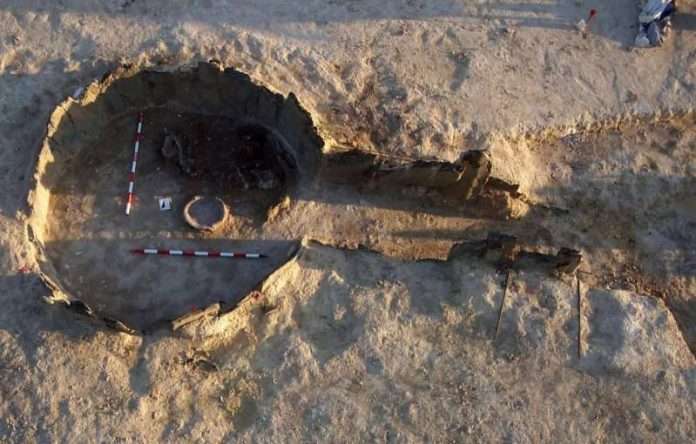Archaeologists found that the person buried in a luxurious Neolithic cemetery previously discovered in Spain is a woman who appears to be high-ranked in society, and not a male as was previously thought, so they subsequently changed the approved name from “Ivory Man” to “Ivory Lady.”
In what is seen as tipping of the scales, ancient human remains are the only way to document the history of gender inequality in prehistoric societies, but the poor preservation of skeletons makes it difficult, if not impossible, to determine biological differences between the sexes based on morphology, reports Al-Rai daily quoting AFP.
In this sense, the study of genetic characteristics is becoming an increasingly adopted alternative to determining sex, but the problem is that this method is limited because ancient DNA easily degrades in the hot and dry climates that characterize the Iberian Peninsula.
At the vast prehistoric site of Valencina de la Concepcion, near Seville in southern Spain, archaeologists have unearthed massive funerary structures that are around 5,000 years old, a period at the end of the Neolithic known as the Copper Age.
Funeral traditions in this era were based on collective burials, but an individual burial discovered in 2008 dating back between 2900 and 2650 years before the present era seemed to contradict this trend.
A traditional anthropological physical analysis indicated that the occupant of this tomb was a male between the ages of 17 and 25, according to a study published this week in the journal Scientific Report.
Beside the buried, items of notable status were found, including a large ceramic plate containing traces of wine, a small copper awl (used to pierce the skin), wooden and ivory objects, in addition to a complete tusk of an African elephant, a case that had not been previously discovered in Europe.
Sometime after his burial, new artifacts were placed in the tomb, among them a rock crystal dagger with an ivory handle.
The study, which cited previous research on the peoples of the region, noted that “the quantity and quality of funerary offerings show that the buried dead was the highest social matter in the Iberian Peninsula during the Copper Age.”
The main author of the study, Marta Thintas Pena, who specializes in gender inequality in early societies, explained in an interview with Agence France-Presse that the “ivory man” was a “distinguished individual” that the researchers wanted to “confirm his gender.”
For this purpose, her team resorted to an important auxiliary component of fossilized teeth, and used a new technique to analyze the enamel of ancient teeth that contain large amounts of the protein amelogenin. This gene is present on the sex chromosomes, which made it possible to conclude that the deceased buried is not a man… but a woman.
The study linked this discovery to a group burial chamber that was established near the tomb of “Our Lady of Ivory”, after two or three generations, and includes about 15 young women whose gender was identified by their bones. This mass grave contained valuable furniture similar to that placed in the woman’s tomb, such as ivory, amber, ornate clothing, and so on.
The research documented other cases of women whose burials were of the same luxury in the following Bronze and Iron Ages, including the “Lady of the Fix” in Burgundy (France), but the prevailing in this era was “burials of high-ranking men,” according to the study authors. However, no burial of men of this high social level has yet been discovered in Valencina.
The study also concluded that the “Lady of Ivory” reached the top of the social hierarchy by her merit alone, inferring that from the absence of objects in the burials of children, which indicates that the acquisition of status was not obtained according to the “right of birth”, unlike what was the case in the societies of the Bronze Age.
Marta Senath Pena believed that this woman was next the “highest” in an era “in which Western European society was taking on an increasingly hierarchical nature, and in which (elite) it seemed clear that this woman belonged to her.”
“Leadership in pre-state societies was usually reserved for men, but our study showed that this was not necessarily the case in prehistoric times,” she added.
However, the historian specializing in prehistoric times at the National Institute for Preventive Archaeological Research, Anne Ogoro, who was not involved in the study, cautioned against believing in the “myth of the primitive matriarchy.”
And the author of the book “Women of the Neolithic Age” explained that “no matriarchal society has been discovered until today in an unquestionable way.”

















